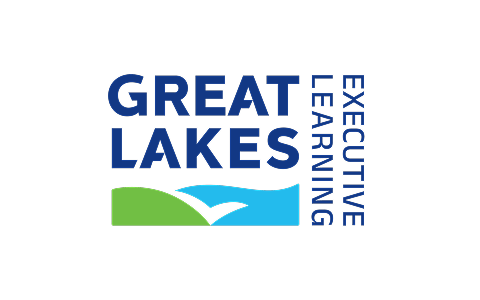- Great Learning
- Free Courses
- Management
Free Resource Planning Course
Resource Planning
Learn resource planning from basics in this free online training. Resource planning course is taught hands-on by experts. Learn various types of resource planning methods, its importance & benefits in details with example.
Instructor:
Shantnu RanaResource Planning
10.4K+ learners enrolled so far
Stand out with an industry-recognized certificate
10,000+ certificates claimed, get yours today!
Get noticed by top recruiters
Share on professional channels
Globally recognised
Land your dream job

Skills you will gain
Resource planning estimation
HR planning
Key Highlights
Get free course content
Master in-demand skills & tools
Test your skills with quizzes
About this course
Resource planning is a process of allocating tasks to team members based on their capacity, skill sets, and the best fit for the job. It maximizes efficiency by helping teams manage their utilization rates, track capacity, monitor progress, and keep projects on budget and work on track. In this course, you will understand about identifying, forecasting, and allocating various business resources to the projects at the right time. The main objective of proper resource planning is to achieve the optimum use of an organization's time and people.
Course outline
What is Resource Planning?
Resource planning is the process of identifying, forecasting, and assigning various types of resources to the projects at an appropriate time and cost.
Resource Planning Examples
Get familiar with the concept of resource planning by taking the example of a software development project.
Consequences of poor Resource Planning
Poor resource planning can cause improper resource allocation, decreased productivity, project delay, etc.
Importance of Resource Planning
Resource planning is an essential determinant of whether or not a project will succeed. Effective resource planning ensures the project delivery on time.
Important Steps in Resource Planning
There are four important steps in resource planning- Ascertain resources, procure resources, manage resources, and control resources.
Estimating the Resources
The main goal of the resource estimation is to allocate the required resources to each task on the list.
Enterprise Resource Planning
Enterprise resource planning is a process used by organizations to integrate and manage the important aspects of their business operations.
Resource Planning in Construction
Resource planning in construction is very important and can be used to determine any constraints such as weather, site access, etc.
Human Resource Planning
Human resource planning (HRP) is the practice of estimating the optimal number of employees required to complete a project, job, or objective on time.
Resource Planning Tools and their benefits
This module will help you get familiar with the top resource planning tools and their benefits.
Get access to the complete curriculum once you enroll in the course
Stand out with an industry-recognized certificate
10,000+ certificates claimed, get yours today!
Get noticed by top recruiters
Share on professional channels
Globally recognised
Land your dream job

Resource Planning

1.5 Hours
Beginner
10.4K+ learners enrolled so far
Get free course content
Master in-demand skills & tools
Test your skills with quizzes
Refer and earn
Get learning discounts up to $20
Learner reviews of the Free Courses

5.0

5.0

5.0
What our learners enjoyed the most
Skill & tools
60% of learners found all the desired skills & tools
Our course instructor

Shantnu Rana
Academic Counseling Expert
Management Expert
Frequently Asked Questions
Will I receive a certificate upon completing this free course?
Is this course free?
What is Resource Planning?
Resource planning is the process of identifying, scheduling, and managing all of the resources needed to complete a project. This includes human resources, equipment, facilities, and other materials. You now learn Resource Planning in-depth by enrolling in Great Learning's free Resource Planning courses.
Why do we need Resource Planning?
There are several reasons why resource planning is essential:
- Resource planning ensures that an organization has the right mix of resources (example: people, equipment, etc.) to achieve its objectives.
- It helps optimize the use of resources, improving efficiency and saving costs.
- Resource planning can help avoid or mitigate risks associated with resource shortages or other problems.
- It helps improve coordination and communication within an organization and between different organizations.
- Resource planning can help ensure that an organization's resources are used sustainably.
Why is Resource Planning necessary?
Resource planning is necessary to ensure that an organization has the right resources in place to meet its goals and objectives. By planning for resources, an organization can avoid overspending or underspending and ensure that it has the right mix of resources to meet its needs. Learn more about it by going through the Resource Planning Courses Great Learning offers.
Will I get a certificate after completing this Resource Planning free course?
Yes, you will get a certificate of completion for Resource Planning after completing all the modules and cracking the assessment. The assessment tests your knowledge of the subject and badges your skills.
How much does this Resource Planning course cost?
It is an entirely free course from Great Learning Academy. Anyone interested in learning the basics of Resource Planning can get started with this course.
Is there any limit on how many times I can take this free course?
Once you enroll in the Resource Planning course, you have lifetime access to it. So, you can log in anytime and learn it for free online.
Can I sign up for multiple courses from Great Learning Academy at the same time?
Yes, you can enroll in as many courses as you want from Great Learning Academy. There is no limit to the number of courses you can enroll in at once, but since the courses offered by Great Learning Academy are free, we suggest you learn one by one to get the best out of the subject.
Why choose Great Learning Academy for this free Resource Planning course?
Great Learning Academy provides this Resource Planning course for free online. The course is self-paced and helps you understand various topics that fall under the subject with solved problems and demonstrated examples. The course is carefully designed, keeping in mind to cater to both beginners and professionals, and is delivered by subject experts.
Great Learning is a global ed-tech platform dedicated to developing competent professionals. Great Learning Academy is an initiative by Great Learning that offers in-demand free online courses to help people advance in their jobs. More than 5 million learners from 140 countries have benefited from Great Learning Academy's free online courses with certificates. It is a one-stop place for all of a learner's goals.
What are the steps to enroll in this Resource Planning course?
Enrolling in any of the Great Learning Academy’s courses is just one step process. Sign-up for the course, you are interested in learning through your E-mail ID and start learning them for free online.
Will I have lifetime access to this free Resource Planning course?
Yes, once you enroll in the course, you will have lifetime access, where you can log in and learn whenever you want to.
Become a Skilled Professional with Pro Courses
Gain work-ready skills with guided projects, top faculty and AI tools, all at an affordable price.


View Course

Included with Pro+ Subscription

View Course

Included with Pro+ Subscription
.jpg)
View Course

Included with Pro+ Subscription


View Course

Included with Pro+ Subscription


View Course

Included with Pro+ Subscription

View Course

Included with Pro+ Subscription

View Course

Included with Pro+ Subscription

View Course

Included with Pro+ Subscription




View Course

Included with Pro+ Subscription

View Course

Included with Pro+ Subscription

View Course

Included with Pro+ Subscription
.jpg)
View Course

Included with Pro+ Subscription

View Course

Included with Pro+ Subscription

View Course

Included with Pro+ Subscription


View Course

Included with Pro+ Subscription


View Course

Included with Pro+ Subscription


View Course

Included with Pro+ Subscription


View Course

Included with Pro+ Subscription


View Course

Included with Pro+ Subscription


.png)
View Course

Included with Pro+ Subscription

View Course

Included with Pro+ Subscription

View Course

Included with Pro+ Subscription

View Course

Included with Pro+ Subscription
.jpg)
View Course

Included with Pro+ Subscription
.jpeg)
View Course

Included with Pro+ Subscription

View Course

Included with Pro+ Subscription

View Course

Included with Pro+ Subscription
.png)
View Course

Included with Pro+ Subscription


View Course

Included with Pro+ Subscription


View Course

Included with Pro+ Subscription


View Course

Included with Pro+ Subscription
.png)
View Course

Included with Pro+ Subscription



.jpg)

.jpg)

.png)

View Course

Included with Pro+ Subscription

View Course

Included with Pro+ Subscription

View Course

Included with Pro+ Subscription
.png)
View Course

Included with Pro+ Subscription
.png)
View Course

Included with Pro+ Subscription
.png)
View Course

Included with Pro+ Subscription

View Course

Included with Pro+ Subscription

View Course

Included with Pro+ Subscription

View Course

Included with Pro+ Subscription

View Course

Included with Pro+ Subscription

View Course

Included with Pro+ Subscription
.png)
View Course

Included with Pro+ Subscription
.jpg)
View Course

Included with Pro+ Subscription

View Course

Included with Pro+ Subscription


View Course

Included with Pro+ Subscription

View Course

Included with Pro+ Subscription

View Course

Included with Pro+ Subscription

View Course

Included with Pro+ Subscription

View Course

Included with Pro+ Subscription


View Course

Included with Pro+ Subscription
.png)
View Course

Included with Pro+ Subscription
Popular


View Course

Included with Pro+ Subscription

View Course

Included with Pro+ Subscription
.jpg)
View Course

Included with Pro+ Subscription


View Course

Included with Pro+ Subscription


View Course

Included with Pro+ Subscription

View Course

Included with Pro+ Subscription

View Course

Included with Pro+ Subscription

View Course

Included with Pro+ Subscription
AI & Generative AI




View Course

Included with Pro+ Subscription

View Course

Included with Pro+ Subscription

View Course

Included with Pro+ Subscription
.jpg)
View Course

Included with Pro+ Subscription

View Course

Included with Pro+ Subscription

View Course

Included with Pro+ Subscription
Microsoft Courses


View Course

Included with Pro+ Subscription


View Course

Included with Pro+ Subscription


View Course

Included with Pro+ Subscription


View Course

Included with Pro+ Subscription


View Course

Included with Pro+ Subscription


Management
.png)
View Course

Included with Pro+ Subscription

View Course

Included with Pro+ Subscription

View Course

Included with Pro+ Subscription

View Course

Included with Pro+ Subscription
.jpg)
View Course

Included with Pro+ Subscription
.jpeg)
View Course

Included with Pro+ Subscription

View Course

Included with Pro+ Subscription

View Course

Included with Pro+ Subscription
.png)
View Course

Included with Pro+ Subscription
.jpg)
View Course

Included with Pro+ Subscription
.jpg)
View Course

Included with Pro+ Subscription
.png)
View Course

Included with Pro+ Subscription
.png)
View Course

Included with Pro+ Subscription
.png)
View Course

Included with Pro+ Subscription
.png)
View Course

Included with Pro+ Subscription
 (1).jpg)
View Course

Included with Pro+ Subscription
Cloud Computing


View Course

Included with Pro+ Subscription


View Course

Included with Pro+ Subscription


View Course

Included with Pro+ Subscription
.png)
View Course

Included with Pro+ Subscription



.jpg)

.jpg)

.png)

View Course

Included with Pro+ Subscription


View Course

Included with Pro+ Subscription

View Course

Included with Pro+ Subscription
.png)

.png)

View Course

Included with Pro+ Subscription


Cyber Security

View Course

Included with Pro+ Subscription

View Course

Included with Pro+ Subscription
.png)
View Course

Included with Pro+ Subscription
.png)
View Course

Included with Pro+ Subscription
.png)
View Course

Included with Pro+ Subscription
IT & Software

View Course

Included with Pro+ Subscription

View Course

Included with Pro+ Subscription

View Course

Included with Pro+ Subscription

View Course

Included with Pro+ Subscription

View Course

Included with Pro+ Subscription
.png)
View Course

Included with Pro+ Subscription
.jpg)
View Course

Included with Pro+ Subscription

View Course

Included with Pro+ Subscription


View Course

Included with Pro+ Subscription
 (1).png)
View Course

Included with Pro+ Subscription


View Course

Included with Pro+ Subscription

View Course

Included with Pro+ Subscription


View Course

Included with Pro+ Subscription

View Course

Included with Pro+ Subscription

View Course

Included with Pro+ Subscription
.png)
View Course

Included with Pro+ Subscription
.png)
View Course

Included with Pro+ Subscription

View Course

Included with Pro+ Subscription

View Course

Included with Pro+ Subscription

View Course

Included with Pro+ Subscription

View Course

Included with Pro+ Subscription

View Course

Included with Pro+ Subscription
Data Science & ML

View Course

Included with Pro+ Subscription

View Course

Included with Pro+ Subscription

View Course

Included with Pro+ Subscription

View Course

Included with Pro+ Subscription


View Course

Included with Pro+ Subscription
.png)
View Course

Included with Pro+ Subscription
Subscribe to Academy Pro+ & get exclusive features
$25/month
No credit card required

Learn from 40+ Pro courses

Access 500+ certificates for free

700+ Practice exercises & guided projects

Prep with AI mock interviews & resume builder
Recommended Free Management courses




Similar courses you might like

.jpg)

.jpg)
Related Management Courses
-
Personalized Recommendations
Placement assistance
Personalized mentorship
Detailed curriculum
Learn from world-class faculties
50% Average salary hike -


Great Lakes Executive Learning
PGP in Strategic Digital Marketing6 Months · Online · Weekend
Dedicated Career SupportKnow More
Relevant Career Paths >
Resource Planning
Resource planning is a crucial component of effective project management and organizational success. It involves the careful allocation and management of various resources, including human, financial, technological, and physical assets, to achieve specific objectives. Resource planning plays a pivotal role in ensuring that an organization or project operates efficiently, stays within budget, and meets its goals.
Resource planning encompasses several key elements:
- Human Resources: The allocation of skilled personnel is a critical aspect of resource planning. It involves identifying the right individuals with the required expertise and assigning them to appropriate roles within the project or organization. This process ensures that tasks are completed by competent professionals, leading to better outcomes and increased efficiency.
- Financial Resources: Managing financial resources is essential for any organization. Resource planning in this context includes budgeting, cost estimation, and financial forecasting. It helps organizations ensure that they have the necessary funds to support their operations, projects, and strategic initiatives while avoiding financial crises or overspending.
- Technological Resources: Technology is an integral part of modern business operations. Resource planning involves identifying the right technology solutions, such as software, hardware, and IT infrastructure, to support the organization's goals. It ensures that the technology is up-to-date, reliable, and cost-effective.
- Physical Resources: These include physical assets like office space, equipment, and machinery. Effective resource planning ensures that these assets are utilized optimally, reducing downtime and maintenance costs.
- Time and Scheduling: Time is a finite and valuable resource in any project. Resource planning involves creating schedules and timelines to manage work tasks efficiently, ensuring that deadlines are met and that time is used effectively.
The benefits of resource planning are numerous and contribute significantly to an organization's success:
- Improved Efficiency: By allocating resources effectively, organizations can reduce waste and optimize productivity, leading to higher efficiency levels. This results in cost savings and increased profitability.
- Cost Control: Resource planning helps organizations manage their finances more effectively, preventing overspending and financial instability. It allows for the allocation of resources based on priority, need, and cost constraints.
- Risk Mitigation: By planning resources carefully, organizations can identify potential risks and develop strategies to mitigate them. This proactive approach reduces the likelihood of unexpected setbacks and costly delays.
- Better Decision-Making: Resource planning provides decision-makers with essential data to make informed choices about resource allocation, project priorities, and resource reallocation. This leads to more strategic and successful decision-making.
- Resource Optimization: Through effective resource planning, organizations can maximize the utilization of their resources, such as human capital and technology. This can lead to greater innovation and competitiveness in the market.
- Enhanced Collaboration: Resource planning often involves team collaboration and communication. It ensures that all team members are on the same page, leading to better coordination and synergy among different departments and functions.
- Strategic Alignment: Resource planning is closely tied to an organization's strategic objectives. By aligning resource allocation with strategic goals, an organization can make sure that it is moving in the right direction and achieving its long-term vision.
However, resource planning is not without its challenges. It requires a deep understanding of an organization's goals, capabilities, and constraints, as well as the ability to adapt to changing circumstances. In addition, resource planning can be complex, especially in large and multifaceted organizations or projects. Furthermore, it relies on accurate data, and inaccurate or incomplete information can lead to flawed resource allocation decisions.
In conclusion, resource planning is an essential process for achieving efficient resource utilization, cost control, and effective project management. It encompasses the allocation of human, financial, technological, and physical resources and is crucial for an organization's success. While it poses certain challenges, the benefits of resource planning in terms of efficiency, cost control, risk mitigation, and strategic alignment far outweigh the difficulties. It is a fundamental tool for any organization or project seeking to thrive in today's competitive and dynamic business environment.









